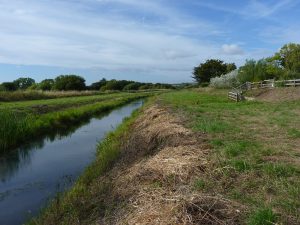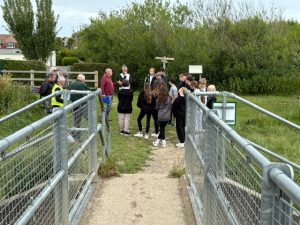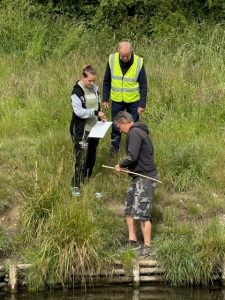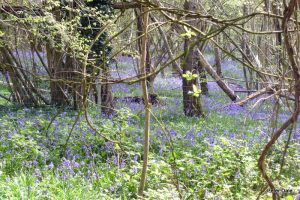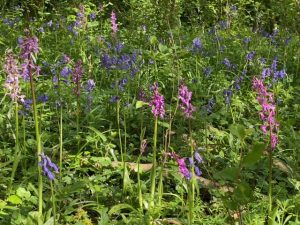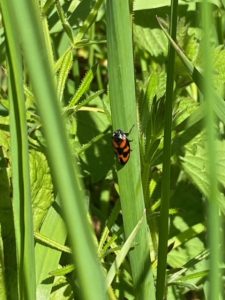Jays by Michael Blencowe for Sussex Wildlife Trust
Each autumn a lot of my conversations go like this: “This morning I saw a weird pink and blue bird on my lawn.” Me: “It’s a Jay.” “There’s a parrot on my bird table!” Me: “It’s a Jay.” “I’ve just seen…” Me: “It’s a Jay”. Spotting such an exotic looking bird in the back garden gets even my most wildlife-averse friends reaching for the Blencowe bird identification hotline. Yet despite looking like it has flown in direct from the jungles of Costa Rica, the Jay lives in Sussex all year round. For most of the year it withdraws to the woodlands and leads an elusive life amongst the leaves. But in October it is time for the Jay to step out of the shadows.
Jays look fabulous. With extravagant pink plumage, a drooping black moustache and a snazzy electric blue flash through the wings, it’s no surprise that the eminent Sussex naturalist, W.H. Hudson, called it ‘the British Bird of Paradise’. Surprisingly, it’s a member of the crow family. But while the related Ravens, Rooks, Crows and Jackdaws all wear black funereal feathers, the Jay obviously didn’t get the memo about the dress code! Gather the Crows for a family portrait and the Jay stands out like Danny La Rue in full drag amongst a crowd of coal miners. But, when the Jay opens its beak, it reveals its family heritage. The song of the Jay is a rough, rasping, nails-down-the-blackboard shriek, which would make any Crow proud.
The reason we see more Jays in the autumn is because they are busy. Jays are nuts about acorns and at this time of the year their favourite food is in plentiful supply. But the Jay is a clever bird. Aware that there are lean times ahead it starts making a long-term investment for surviving the winter. With up to nine acorns jammed in its beak and throat, the Jay flies far from the woodlands and hides these nuts in nooks and under dead leaves. With an impressive ability to remember exactly where he has stashed them, the Jay will return, and tuck into these life-saving larders in the cold days of winter. I’ve employed a similar strategy many times at parties! Faced with a full buffet at the start of the night, I hide a few piles of crisps and vol-au-vents behind curtains and cushions to help me get through the evening.
One Jay can store up to 5000 acorns in a season. Not all are remembered and retrieved and from these lost acorns, mighty Oaks grow. I often wonder how many of the huge Oaks we see in Sussex were originally planted by Jays. Through the centuries these birds have been architects of the English countryside: a landscape created by the forgetfulness of a pink crow.
Sussex Wildlife Trust is a conservation charity for everyone who cares about nature in Sussex. Founded in 1961, we have worked with local people for over half a century to make Sussex richer in wildlife. We rely on the support of our members. Please consider joining us. Your membership will help us challenge decisions that threaten wildlife, care for more than 30 nature reserves, and inspire the next generation about the wonders of the natural world. It’s easy to join online at sussexwildlifetrust.org.uk/join

